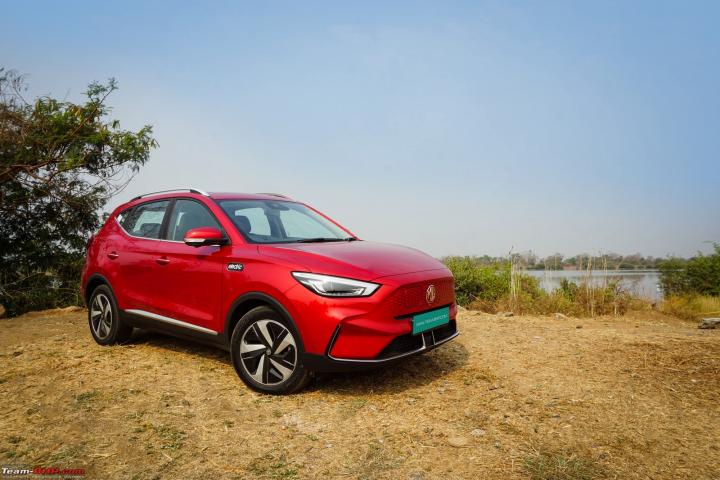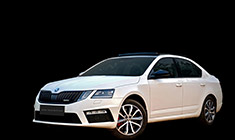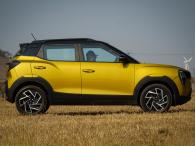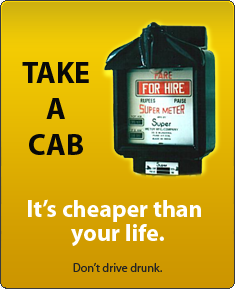News
Aggressive regen can reduce an EV's range on the highway: Here's how
For maximum range on highways the most important principle is to maintain speed. Aggressive regen can inadvertently cause a slow-down speed-up cycle and results in inefficiency.
BHPian electric_eel recently shared this with other enthusiasts.
Regenerative braking (regen for short) is a great feature of EVs that saves the kinetic energy in a moving car into the battery during braking. If not for regenerative braking this energy would have been lost permanently as heat in the brake pads. So regen has a special place in the hearts of range anxiety stricken EV owners. However, beware of the ill effects of regen, particularly for range on highways. In this post I, give a simplified analysis of the regen that explains why one needs to be careful when using higher levels of regen in sparse traffic conditions. In fact I have found that in NExon EV, anything beyond regen 1 is useless except for certain really steep descents.
Since this is for building an intuition I will neglect all the other energy loses that occurs when driving the car (predominantly wind resistance). These losses that I have neglected only makes things worse.
TL;DR:
- For maximum range on highways the most important principle is to maintain speed. Aggressive regen can inadvertently cause a slow-down speed-up cycle and results in inefficiency. Using cruise controls can make the drive inefficient.
- The above two recommendation contradict each other so read on if you want to know why it still makes sense.
Acceleration-deceleration cycle is the killer of range.
Imagine that you are cruising at a constant speed of say u. If we neglect the effect of other forces you can continue to cruise at this speed for ever without incurring any cost in terms of energy (Newtons first law). On the other hand consider an acceleration-deceleration cycle which involves increasing the speed to v and then coming back to u (via regen). The cost in energy is as follows
You need to increase the kinetic energy of the car by K = 1/2 m(v² - u²) for which you will have to supply ηK energy from the battery, where η is the efficiency of the drive train. So the energy lost from the battery is 1/η K.
While slowing down (fully by regen) you reduce the kinetic energy of the car by the same amount K. However not all of it is put back. If γ is the efficiency of regeneration then the energy gained through regen is γ K.
This means the net loss is (1/η - γ)K. The EV drive train is pretty efficient and hence we can assume optimistically that η = 0.9. The regen efficiency would be lower as it involves the generator (an efficiency of 0.9) and a charging loss (optimistically another 0.9). So γ = 0.81 would be reasonable to assume. So the net loss in about 0.3 K which is a nontrivial loss. Assuming the best of the drive train and regen efficiency, almost 1/3 the energy is lost in the regen process. The deceleration followed by acceleration is also similar.
For Hybrids (ICE + regen) things are staggeringly worse. The drive train efficiency η much lesser \< 0.5 and the calculation above shows we loose about 1.2 K.
Cruise control drains battery
Naturally, if we are to maintain speed then it would be best to just use the cruise control. This is indeed correct if we were driving on a flat high way. On the other hand if the high way goes up and down, which is often the case due to fly overs, Cruise control behaves like an acceleration-deceleration cycle: The car does not gain any kinetic energy through out the drive but at the top of the incline it has gained potential energy (P = mgh). We can repeat the above calculation with P instead of K and would arrive at similar conclusion
Recommendation for high way driving
- Accelerating followed by deceleration or vice versa is a big consumer of battery power and hence maintaining speed (on flat surfaces) is the best strategy.
- Aggressive regen leads to inadvertent deceleration followed by acceleration due to fluctuations in throttle pressure and hence is bad for efficiency on highways.
- Cruise control on undulating terrain behaves like acceleration-deceleration cycle and is to be avoided.
The moving car is a "battery" of mechanical energy; Drive such that you never supply/demand any energy from it. Needless to say be reasonable in applying this in strategy: safety trumps efficiency always.
The above principle is true for ICE+BEV hybrids as well and the effects are much more dramatic due to the lower efficiency of the ICE. Other considerations like the operational RPM also plays a significant role in this case.
Here's what BHPian wocanak had to say on the matter:
All good points, but don't forget these:
When going downhill predominantly, you want enough regen to descent without hard braking, mild braking in most EVs will anyway use regen.
Traffic in highways is not always light, some sections of highways have notoriously bad city like traffic, you again want regen there.
Most annoying is when the traffic conditions drastically vary in the highway, then you have to constantly adjust the regen level.
Here's what BHPian srini1785 had to say on the matter:
Get over it. Any EV when going down hill is going to produce power. How you use it is your choice. You can get it back to your battery or boil water/milk on a kettle, run a 2000W amplifier, label it as clean energy and store it in a battery and sell it (and get yourself a Greta award). What you cannot do is tell the motor not to generate. Period.
Here's what BHPian SKC-auto had to say on the matter:
The effeciency in hybrids is because during deceleration and slow acceleration the ICE engine switches off, even when charging the battery the ICE engine runs at its peak effeciency. Meanwhile, ICE engine in non hybrids run all the time.
The reason why there is lot of difference in city mileage between a Hybrid and non hybrid. The mileage will be closer if you are driving in 6th gear at constant speed of 100kmph.
Here's what BHPian Jeroen had to say on the matter:
I see these comments a lot on the internet. Similar for ICE cars where cruise control is claimed to be inefficient in hilly terrain. I am not convinced about that at all. It might be true, but only under specific circumstances, if at all.
What nobody seems to be taken into consideration is the fact that there is a hill on the road you are driving on. You need to get over it, no matter what. You have two options, you go across using cruise control, or not. So if you want to make any statements on the effectiveness of cruise control it should, my opinion, be a comparison between those two scenario’s. Hill up and down with cruise control on and hill up and down without cruise control.
Modern cruise controls are capable of controlling the cruising speed within a very narrow bandwidth. They have virtually no hystereses.
So when you drive up a hill, the speed is kept constant, which means you don’t loose any kinetic energy (no change in speed) and gain potential energy (height). You have used extra energy going up the hill compared to driving at the same constant speed on a flat road.
When you come down the hill, whether and how much regen takes place is, my opionion, dependent on how steep the decline is and how the regen logic on your car works.
So this is what needs to be looked at: How much extra energy is required going uphill at constant speed and how much of that extra energy can be captured going downhill. Next you need to compare that with a driver taking manual control.
My gut feeling is that in most case the cruise control scenario will be more efficient than the manual driving scenario. One of the reason is that almost anybody will slow down going from a flat road up on a hill. Which means you loose kinetic energy. And as the speed is squared (v²) in the formula of kinetic energy dropping a few kilometers/hour means a lot of energy is lost.
On ICE cars the question whether cruise control makes (economic) sense in hilly terrain is identical in the sense, you need to compare the two scenario’s, with and without cruise control. Obviously an ICE cars does not have regen, so in most cases will be worse off than the EV with regen.
On many ICE cars, the cruise control controls the engine RPM and thus the speed. When the speed picks up going downhill the cruise control starts to close down the throttle to the point where the engine is idling or driving by the wheels/transmission and thus effectively engine braking. Not all cruise controls have the capability to also control the brakes. So the most braking power you can get is engine braking. Which means you end up going faster than the set speed on the cruise control, thus building up additional kinetic energy, or wasting it and braking manually.
In the end the efficiency of cruise control in any scenario, is comparing it to a scenario without cruise control. All else is irrelevant. That hill is in front of you and you need to get over it (literally and figuratively )
And that is a very different way of looking things than most of what I see on the Internet.
Maintaining a steady constant speed does indeed mean no change in kinetic energy, but a reduction of speed be it a poor cruise control or your typical human twitchy right foot, means a tremendous loss of kinetic energy, much more than your typical gain in a bit of extra potential energy.
Look at it this way, if you drive an EV at constant speed up and down a hill, compared driving an EV up and down a hill on cruise control what is the difference? The only difference is precise your right foot is in maintaining the constant speed like the cruise control would. In these sort of case, man against machine, man almost always is less efficient! If your right foot is capable of mimicking the cruise control a hundred percent I don't think there would be any difference in regen either?
Read BHPian comments for more insights and information.



















